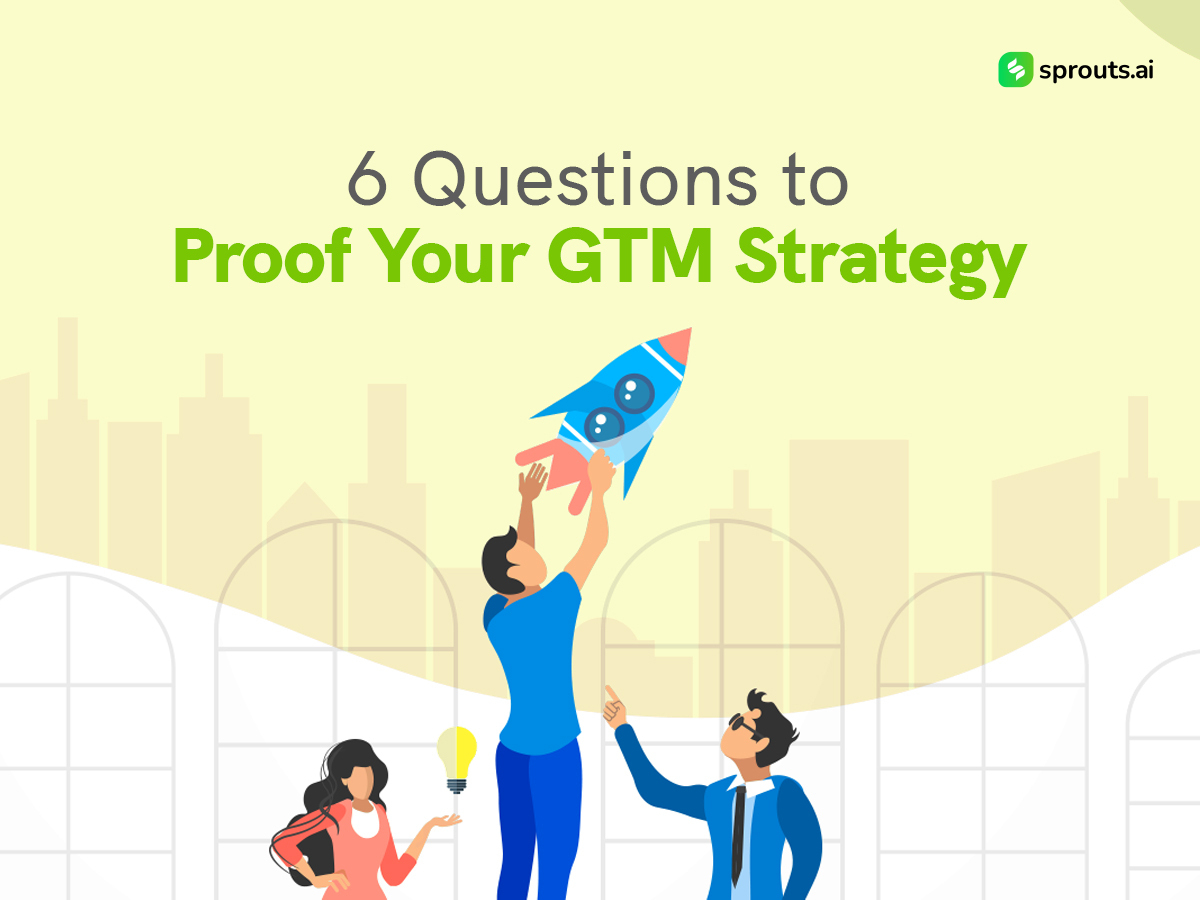Go-To-Market strategy, we got the full form right. But what exactly is a GTM strategy, and what are the key nuances that make it effective? In this blog post, we will explore the ins and outs of GTM strategies and provide you with valuable insights to help you craft a winning approach for your business.
What is a GTM Strategy
A GTM strategy is the comprehensive plan that guides businesses in successfully delivering their products or services to the market. It encompasses all the necessary steps and activities that need to be undertaken to ensure a smooth launch and sustained success. It basically encompasses every aspect of your product’s journey from conception to delivery.
Critical elements of an Effective GTM
So here are the 6 easy steps we promised you in the title of this blog post. They are all not just essential but the very basics of how you can propel your business to success. To make it further easier, all you have to do is ask yourself these 6 questions.
1. Is the product market fit?
This crucial inquiry revolves around assessing the alignment between a product and its intended market. It ensures that the product effectively meets the needs and demands of the target audience, validating its viability and potential success. By evaluating product-market fit upfront, businesses can avoid investing resources in a strategy that may not resonate with customers, allowing for a more focused and impactful GTM approach.
2. What is the value that your product/service delivers?
A clear value proposition and messaging are crucial to the success of your GTM strategy. Your value proposition should clearly articulate the unique benefits and features of your product or service, addressing their WIIFM (What’s In It For Me?) concerns right off the bat. Additionally, your messaging should be consistent across all marketing materials and sales pitches, ensuring that customers receive the same message, regardless of where they encounter your brand.
3. Is your intended market willing to purchase your offering?
The success of your GTM approach is significantly influenced by pricing. The cost of your product should be reasonable and consistent with the value it offers consumers. In order to do this, you must assess your offering’s perceived value. You can choose from a variety of price structures to determine which one best suits your company and your target market, including freemium, tiered pricing, and subscription models.
4. How will your product be delivered to the final user? (Model of distribution)
You must describe the sales and distribution methods you’ll use to advertise your goods or services. Depending on the nature of your business, this can involve partnerships, resellers, direct sales, or online shopping sites. It could involve both online and physical channels.
5. How automated & integrated are your marketing campaigns?
A perfect cocktail of inbound & outbound is exactly what you need. Leverage multiple channels and tactics to engage your target audience. This may involve content marketing, social media, email marketing, search engine optimization (SEO), among other campaign types. Your marketing efforts should be cohesive and aligned with your overall goals. Your customers should not be confused with multiple messaging across touchpoints.
6. Why do you need conversion optimization and customer retention programs?
Conversion optimization is crucial to maximize the effectiveness of your marketing campaigns. It involves analyzing user behavior, optimizing landing pages, and streamlining the customer journey to increase the conversion rate. By constantly testing and refining your marketing strategies, you can identify and eliminate barriers that hinder conversions, ultimately driving more sales and revenue.
Customer retention programs also play a vital role in maintaining long-term relationships with your existing customers. It’s more cost-effective to retain customers than to acquire new ones, and loyal customers tend to spend more and refer others to your business. Implementing personalized communication, loyalty rewards, and exceptional customer service can significantly enhance customer satisfaction and loyalty. By nurturing your existing customer base, you can increase customer lifetime value and foster brand advocacy.
6. Can you measure your results and keep optimising campaigns?
If you cannot track and improve then what’s really the point. Setting crystal clear trackable key performance indicators (KPIs) and objectives is essential. Further the KPIs need to be mapped to set up the standards of success. Regular analysis and optimization will help you identify areas for improvement and make data-driven decisions to enhance your campaigns continuously. As for your existing customers, it is essential to track customer acquistion cost, customer lifetime value, and customer satisfaction.
Overall: There is no rule book to creating the perfect GTM strategy.
By answering the questions discussed in this blog post, you can craft a winning GTM plan which is perfect for you and will help you boost your revenue.
Remember, a well-rounded GTM strategy is not a one-size-fits-all solution. It requires a tailored approach that takes into account the unique needs and goals of your business. With careful planning, execution, and optimization, your GTM strategy will set the foundation for long-term success in the competitive business landscape.

